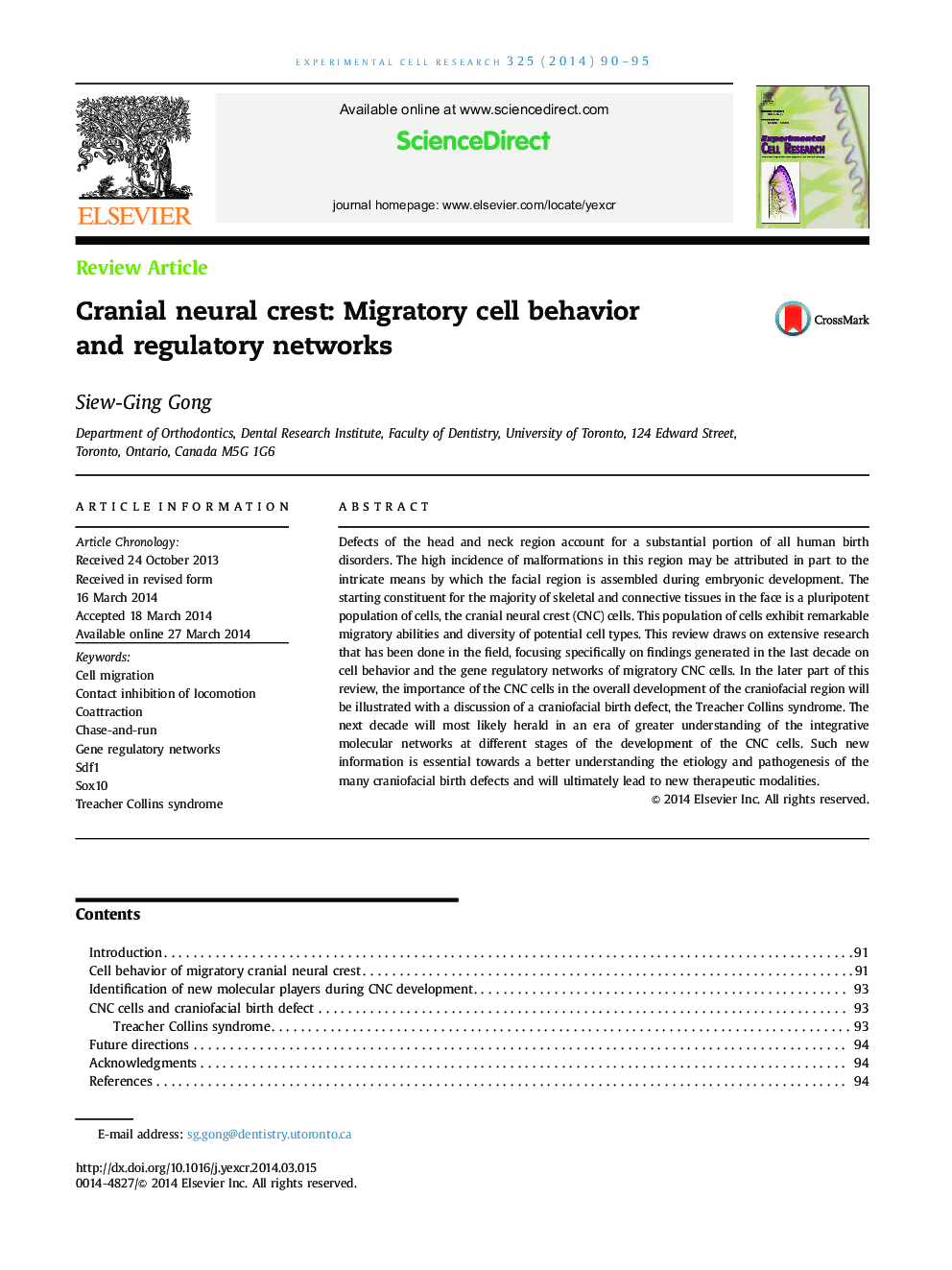| Article ID | Journal | Published Year | Pages | File Type |
|---|---|---|---|---|
| 2130247 | Experimental Cell Research | 2014 | 6 Pages |
•Neural crest cells interact with each other and other cells surrounding cells during migration.•Numerous cellular mechanisms are employed by neural crest cells during migration.•Complex gene regulatory networks exist in neural crest cells.•Dissection of the genomic region of Sox10 reveals critical information on crest cell regulation.•Treacher Collins syndrome is due to defects in cranial neural crest cell formation.
Defects of the head and neck region account for a substantial portion of all human birth disorders. The high incidence of malformations in this region may be attributed in part to the intricate means by which the facial region is assembled during embryonic development. The starting constituent for the majority of skeletal and connective tissues in the face is a pluripotent population of cells, the cranial neural crest (CNC) cells. This population of cells exhibit remarkable migratory abilities and diversity of potential cell types. This review draws on extensive research that has been done in the field, focusing specifically on findings generated in the last decade on cell behavior and the gene regulatory networks of migratory CNC cells. In the later part of this review, the importance of the CNC cells in the overall development of the craniofacial region will be illustrated with a discussion of a craniofacial birth defect, the Treacher Collins syndrome. The next decade will most likely herald in an era of greater understanding of the integrative molecular networks at different stages of the development of the CNC cells. Such new information is essential towards a better understanding the etiology and pathogenesis of the many craniofacial birth defects and will ultimately lead to new therapeutic modalities.
